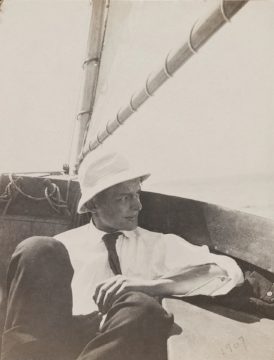Anthony Lane in The New Yorker:
 There was no fanfare when “The Waste Land” first arrived. It was printed in the inaugural issue of The Criterion, a quarterly journal, in October, 1922. On the front cover was a hefty list of contents, among them a review by Hermann Hesse of recent German poetry; an article on James Joyce’s “Ulysses,” which had been published as a book in February of the same year; and an essay by an aged British critic titled—wait for it—“Dullness.”
There was no fanfare when “The Waste Land” first arrived. It was printed in the inaugural issue of The Criterion, a quarterly journal, in October, 1922. On the front cover was a hefty list of contents, among them a review by Hermann Hesse of recent German poetry; an article on James Joyce’s “Ulysses,” which had been published as a book in February of the same year; and an essay by an aged British critic titled—wait for it—“Dullness.”
Eliot was the begetter of The Criterion. He would edit it throughout its existence, until it closed, in January, 1939. In the years between the two World Wars, during which he surveyed—and held sway over—whole shires of the cultural domain, The Criterion would be his minster, with “A Commentary,” often signed “T.S.E.,” as an august and regular feature. No such pronouncements were evident, however, in this initial issue. Instead, Eliot’s only contribution was “The Waste Land.” It came with no preface, no afterword, and no warning. It was four hundred and thirty-three lines long. It appeared at first glance to be a poem, but of a disconcerting kind, and further glancing didn’t really help. Parts of it didn’t look, or sound, or feel, like poetry at all:
O the moon shone bright on Mrs. Porter
And on her daughter
They wash their feet in soda water
Et O ces voix d’enfants, chantant dans la coupole!
Twit twit twit
Jug jug jug jug jug jug
So rudely forc’d.
Tereu
More here.
